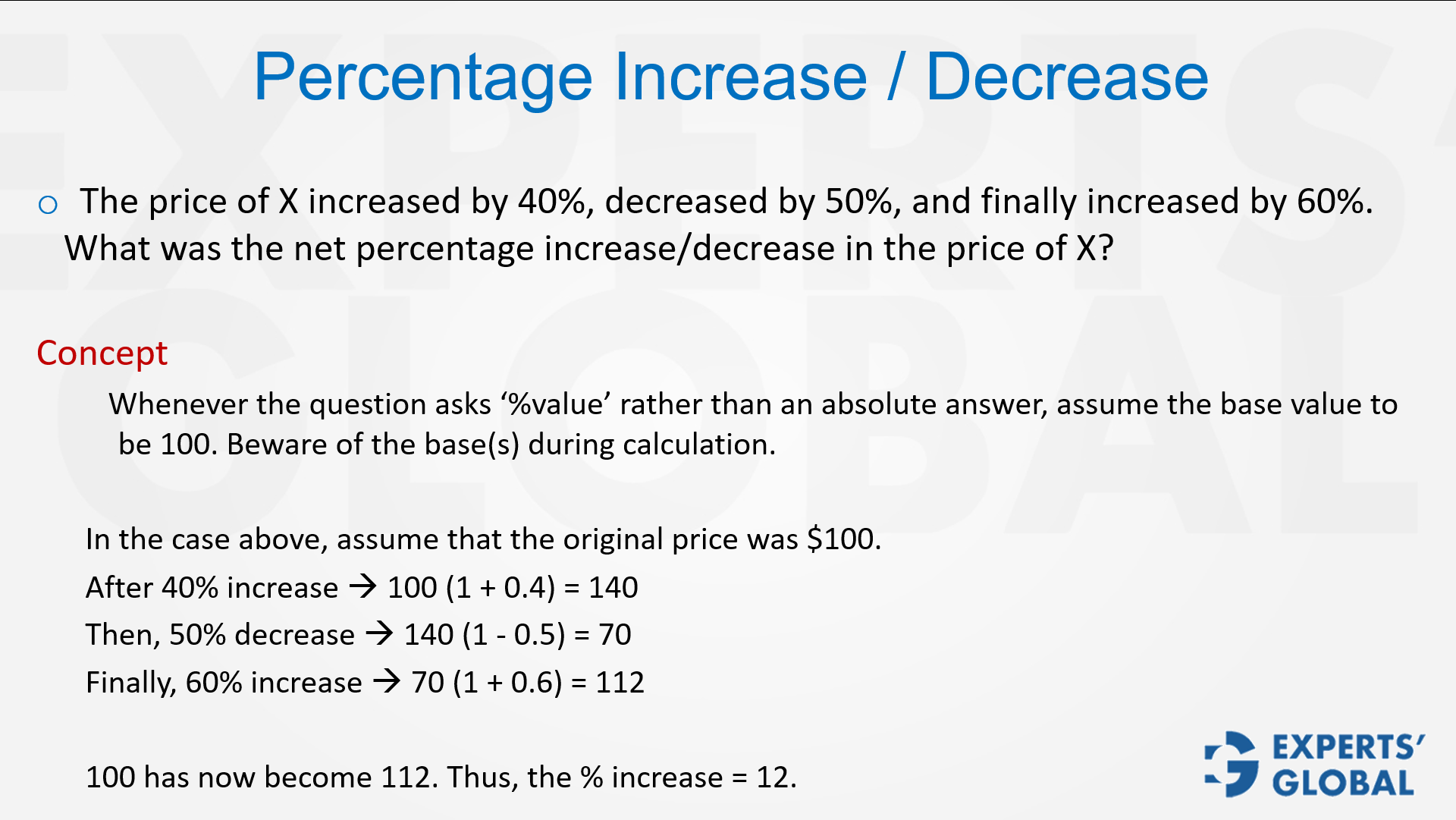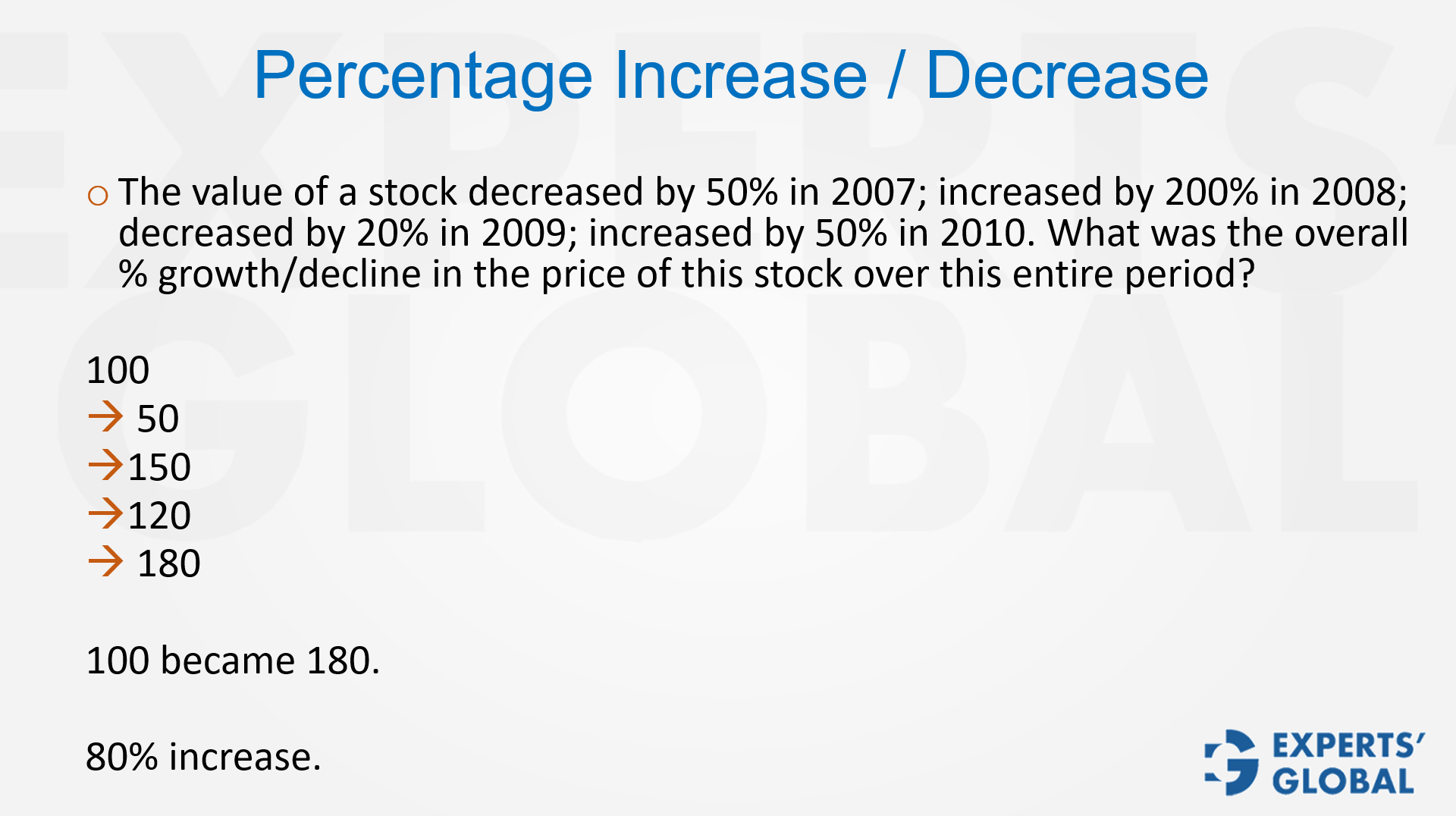Invest 30 seconds...
...for what may lead to a life altering association!
Help Line
- +91.8800.2828.00 (IND)
- 1030-1830 Hrs IST, Mon-Sat
- support@expertsglobal.com
...for what may lead to a life altering association!


On GMAT percentage change questions, assume a base of 100. Compute each step carefully to reach the final value. The difference between the final value and 100 gives the percentage change. This method avoids unnecessary variables, keeps calculations simple, saves time, and reduces errors.
Percentage change questions often look straightforward, yet they carry traps that can confuse even well-prepared students. The biggest challenge is not the calculations but the shifting base on which each percentage is applied. A 40% increase followed by a 50% decrease is not the same as simply subtracting 10%. Each step depends on the new value, not the original one. This is where many go wrong, and this is exactly what the GMAT loves to test. The safest approach is to assume a base value of 100. This makes calculations intuitive and prevents mistakes when percentages stack one after another. A decrease of 40% after a 40% rise will not take you back to your starting point but to a lower number (100 à 40% increase leads to 140 à 40% decrease makes it 84). These questions demand clarity, not shortcuts. Consistent practice with GMAT preparation material and timed drills in will make this process second nature and eventually help you in the MBA applications process.

When a quantity undergoes multiple percentage changes, the correct approach is to assume a base value of 100. This keeps the math clean and prevents errors caused by shifting bases.
The price of X increased by 40%, decreased by 50%, and finally increased by 60%. What was the net percentage increase/decrease in the price of X?
We assume the base as 100.
A 40% increase makes it 140.
A 50% decrease now applies to 140, not 100, bringing it down to 70.
Finally, a 60% increase on 70 makes it 112.
From 100 to 112, the net result is a 12% increase.

Aiming for ISB? Look at our ISB admission consulting module!
The value of a stock decreased by 50% in 2007; increased by 200% in 2008; decreased by 20% in 2009; increased by 50% in 2010. What was the overall % growth/decline in the price of this stock over this entire period?
We assume the base price as $100.
Decreases by 50% makes it $50.
Then, increase by 200%, triples it to $150.
Next, a 20% decrease takes it down to $120.
And a 50% increase finally raises it to $180.
The net change from $100 to $180 is an 80% increase.

Successive percentage changes are never additive. Each step creates a new base, and that base must be respected. By practicing this mindset, you will learn to approach these problems with clarity, speed, and confidence. If you are low on time, you may want to consider opting for a fast-paced, GMAT crash course.
Base 100 is more than a trick; it is a way to think. Choose a clear starting point, then let each step build honestly upon the last. Life also changes in percentages: small choices compound, and shortcuts mislead. When doubt creeps in, return to the base, write the factor, and breathe. The habit of steady, transparent calculation strengthens judgment beyond the exam. Practice this rhythm in GMAT practice tests, and you will see calm replace noise. Respect the base, respect the sign, and check your sense. Clarity is not loud; it is simply earned one careful step at a time.